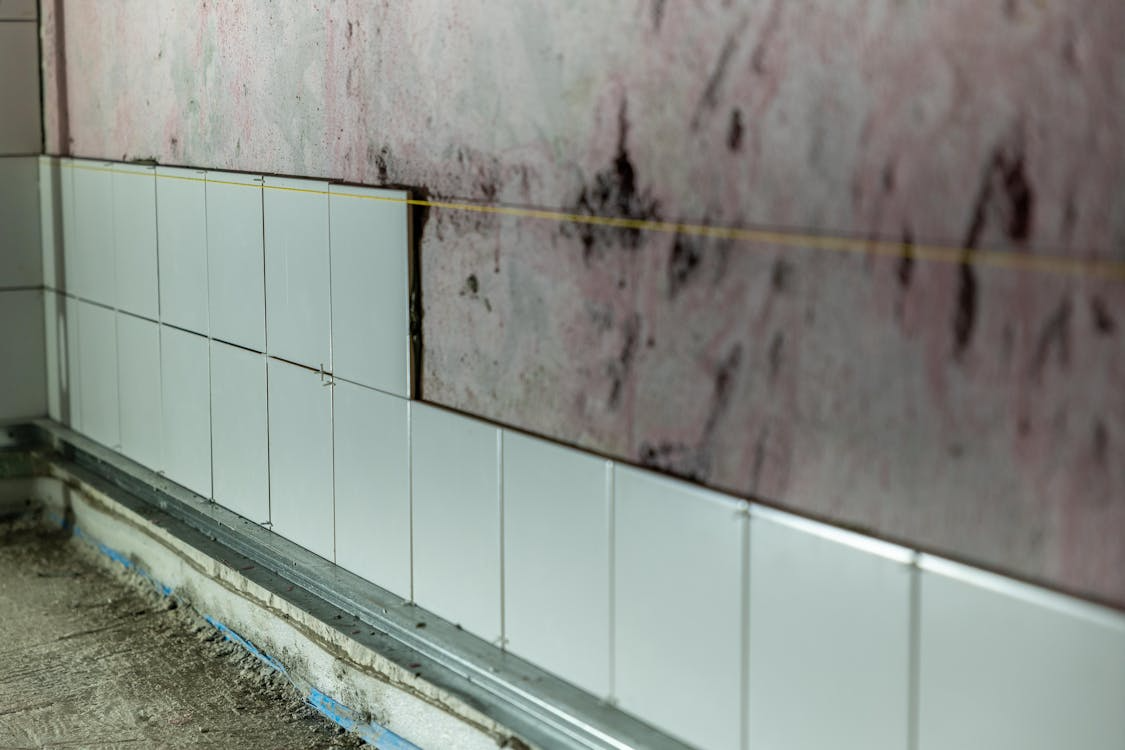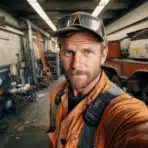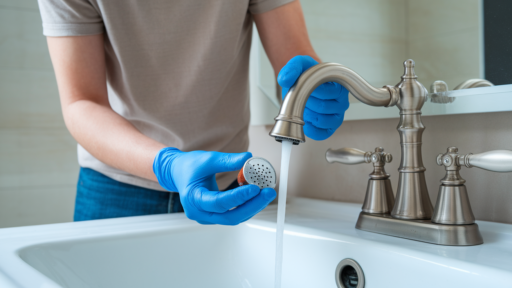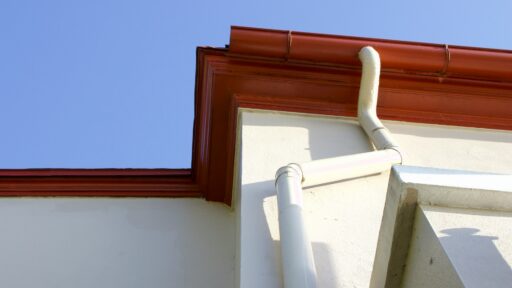Photo by Sergei Starostin from Pexels: https://www.pexels.com/photo/unfinished-wall-tiling-in-construction-site-29181495/
Dealing with mold in your home?
You’re not alone. 47% of residential buildings in the U.S. have visible mold or mold odor, and it’s a problem that’s only getting worse.
The good news?
Most mold problems can be fixed with the right approach. But here’s the kicker…
Most people make critical mistakes during the remediation process that end up making things worse.
These mistakes can cost you thousands of dollars, put your health at risk, and turn a manageable problem into a complete disaster.
What you’ll discover:
- Why DIY Mold Removal Goes Wrong
- The Hidden Dangers You Can’t See
- Professional vs. Amateur Approach
- Moisture Control Mistakes That Kill Results
- When to Call the Experts
Why DIY Mold Removal Goes Wrong
Want to know the biggest mistake homeowners make?
They think mold removal is just about scrubbing away what they can see.
Wrong.
Mold is like an iceberg — what you see on the surface is just a tiny fraction of the actual problem. The real issue is usually hiding behind walls, under flooring, or in your HVAC system.
When you need professional mold removal in York PA, you need to contact trained specialists who understand this invisible threat. They know how to find the source, contain the spread, and eliminate the problem.
Here’s what happens when you try to handle serious mold issues yourself…
Spreading the Problem
Every time you disturb mold without proper containment, you’re launching thousands of spores into the air. These microscopic particles float through your home and settle in new areas.
Result? You end up with mold growing in places that weren’t originally affected.
Professional mold removal services use plastic sheeting, negative air pressure, and HEPA filtration to prevent this disaster. Most DIY attempts skip this crucial step entirely.
Incomplete Removal
Here’s something that might shock you…
Simply killing mold isn’t enough. Even dead mold can trigger allergic reactions and health problems. The only way to solve the problem is to physically remove all mold-contaminated materials.
Many homeowners spray bleach or antimicrobial solutions and think they’re done. But 21% of asthma cases in the U.S. are linked to dampness and mold exposure.
The truth? “The only good mold is physically removed mold,” not dead mold.
The Hidden Dangers You Can’t See
Most people focus on visible mold growth. But there’s a much bigger problem lurking…
Hidden mold.
Mold loves to grow in places you can’t see — inside walls, under carpets, in ceiling tiles, and throughout HVAC systems. If you only treat visible mold, you’re putting a band-aid on a broken leg.
Professional mold removal services use moisture meters, thermal imaging, and air sampling to find these hidden problems. Without proper detection equipment, you’re flying blind.
Mycotoxin Contamination
Here’s something most people don’t know…
Some molds produce mycotoxins — toxic compounds that can cause serious health problems even in small amounts. These toxins can stick around long after the mold is gone.
Black mold (Stachybotrys chartarum) is particularly dangerous because it produces mycotoxins that can cause:
- Respiratory problems
- Memory issues
- Neurological symptoms
- Immune system suppression
You can’t see, smell, or taste mycotoxins. Only professional testing can detect them.
Professional vs. Amateur Approach
The difference between professional and DIY mold remediation is like the difference between brain surgery and first aid.
Here’s what professionals do differently:
Proper Containment
Real mold removal services create negative air pressure zones using specialized equipment. This prevents spores from spreading to clean areas during the remediation process.
DIY attempts usually skip this step entirely, which is why many people end up with bigger mold problems after trying to fix things themselves.
Complete Air Cleaning
Professional remediation doesn’t just remove visible mold. They run air scrubbers and negative air machines for hours or even days to capture airborne spores.
Here’s the problem with amateur attempts…
After disturbing the mold, the air can have higher spore counts than before you started. Without proper air cleaning, you’ve made your indoor air quality worse.
Source Identification
The most critical mistake in mold remediation? Failing to identify and fix the moisture source.
You can remove all the mold you want, but if you don’t fix the water problem that caused it, you’ll be dealing with the same issue again in a few months.
Professional mold removal services always include moisture source identification as part of their process.
Moisture Control Mistakes That Kill Results
Mold needs three things to grow: moisture, oxygen, and a food source. Since you can’t eliminate oxygen or food sources (mold eats almost anything), controlling moisture is your only option.
But most people get this completely wrong.
Ignoring Humidity Levels
Indoor humidity should stay between 30-50%. Anything higher creates perfect conditions for mold growth.
Many homeowners focus on obvious water leaks while ignoring humidity problems. Poor ventilation in bathrooms, kitchens, and basements can create chronic moisture issues.
Incomplete Drying
After water damage, you have 24-48 hours before mold starts growing. Most people think they can dry things out with a few fans and some open windows.
Reality check: Proper drying requires professional-grade dehumidifiers, air movers, and moisture monitoring equipment.
Professional water damage restoration companies use moisture meters to ensure materials are completely dry before reconstruction begins.
When to Call the Experts
DIY mold removal might work for very small surface areas (less than 10 square feet). But there are clear situations where you need professional help:
- Mold covers more than 10 square feet
- Multiple rooms are affected
- Mold is in your HVAC system
- You have health problems or compromised immunity
- The mold returns after DIY attempts
- You smell musty odors but can’t find visible mold
Here’s the bottom line…
Professional mold removal services might cost more upfront, but they save you money in the long run. The average cost of mold remediation ranges from $1,373 to $3,325, with an average expense of $2,347.
Compare that to the potential costs of:
- Repeated DIY failures
- Structural damage from untreated moisture
- Health problems from ongoing exposure
- Mold-related infections have a $5.6 billion annual economic impact
Choosing the Right Professional
Not all mold removal services are created equal. When selecting a company, make sure they:
- Have proper certifications (IICRC, NORMI, or similar)
- Carry appropriate insurance
- Provide detailed written estimates
- Use containment and air filtration
- Include moisture source identification
- Offer post-remediation testing
Red flags to avoid:
- Companies that don’t identify moisture sources
- Quotes that seem too good to be true
- No written contract or warranty
- Pressure tactics to sign immediately
Game Over
Mold remediation mistakes can turn a manageable problem into a health hazard and financial nightmare. The key is understanding that mold removal is more than just cleaning what you can see.
Professional mold removal services have the training, equipment, and experience to:
- Find hidden mold problems
- Contain contamination during removal
- Clean the air of dangerous spores
- Identify and fix moisture sources
- Prevent future mold growth
Remember: The most expensive mold remediation is the one that doesn’t work the first time.
Don’t risk your family’s health or your home’s value by cutting corners. When dealing with serious mold problems, invest in professional remediation services that will solve the problem permanently.
The peace of mind is worth every penny.








